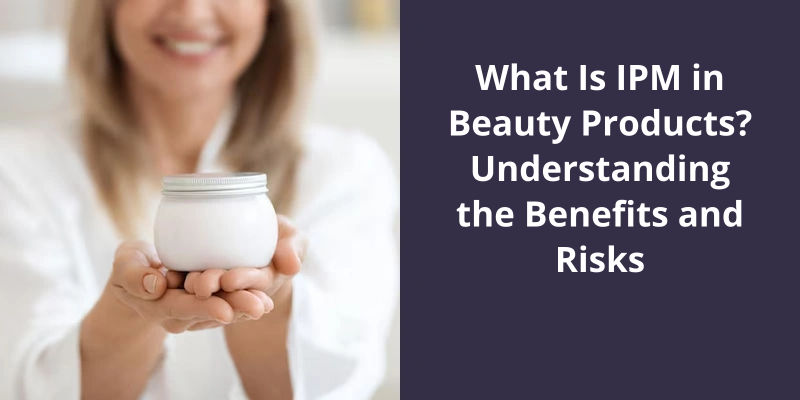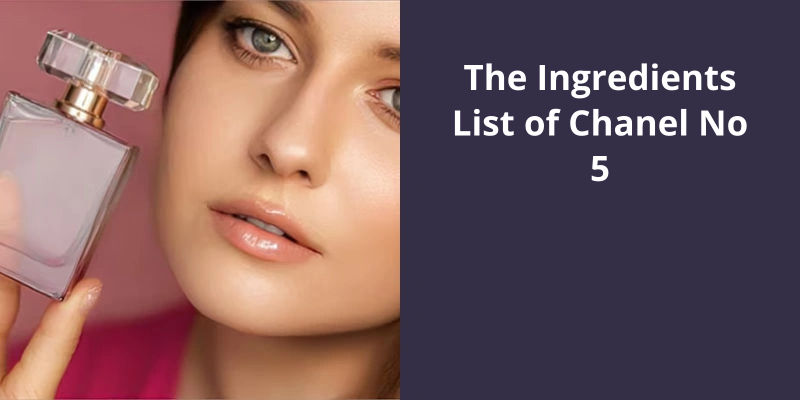Every beauty product has a purpose. Every ingredient in the product has a specific function. Today, we will talk about one such ingredient that’s increasingly gaining popularity in the beauty industry – Isopropyl Myristate (IPM). It’s an oily base with low viscosity and adapts well to the skin. However, the use of IPM in beauty products has become a topic of debate. Some argue that it's harmful, while others swear by it’s effectiveness. So, buckle up, and let's dive into the world of beauty products and IPM.

What Is the Use of IPM in Lotion?
In the field of skincare, the primary task is to create a product that isn’t only effective in enhancing the skins health but also pleasant to use. Lotion is a widely used skincare product, but sometimes the greasiness of the lotion can make it less enjoyable to use. To alleviate this problem, skincare manufacturers have started using Isopropyl Myristate (IPM) as an essential ingredient in their lotion products.
IPM is a synthetic oil that’s distilled from fatty acids and alcohol. It’s a clear, colorless liquid with a mild odor. One of the main reasons for using IPM in lotion is to reduce the greasiness of the product. IPM is known to have excellent lubricating properties, which enables it to blend well with other oils and wax-like ingredients.
Lotion bars, whipped butters, and emulsions are all examples of skincare products that can benefit from using IPM. Lotion bars are solid forms of lotion that melt upon contact with the skin. However, sometimes these bars can be greasy to touch, which can make the user uncomfortable. Likewise, whipped butters and emulsions can sometimes have a heavy feel on the skin, making them unpleasant to use. Adding IPM to these products helps reduce the greasiness and makes them more comfortable to use.
Oxidation is a process that occurs when oils or fats come in contact with oxygen. When oxidation occurs, the oil can become rancid, leading to an unpleasant smell and texture. IPM is known to be resistant to oxidation, which makes it a stable ingredient in skincare products. This means that the lotion product can have a longer shelf life and remain fresh for longer, ensuring maximum effectiveness.
IPM is also a useful diluent for fragrance oils. Fragrance oils are used in skincare products because they provide a pleasant scent. However, fragrance oils are concentrated and can be overpowering. Often, fragrance oils can be an irritant to sensitive skin, but by diluting with IPM, this can also reduce the risk of irritation.
It’s lubricating properties, resistance to oxidation and useful diluting effect make it an essential ingredient in skincare products. It’s a testament to how science can help make our daily lives enjoyable and healthy.
Understanding the role of different ingredients in soap making is crucial for creating high-quality and effective skincare products. One such ingredient that’s commonly used in various beauty products is Isopropyl Myristate (IPM). However, it’s essential to know it’s properties, functions, and potential side effects to make informed decisions while formulating soap. So, let’s dive into what IPM is and how it impacts soap making.
What Is IPM in Soap Making?
In soap making, IPM serves as a popular ingredient for creating high-quality soaps due to it’s unique properties. It enhances the texture and feel of the soap, making it smoother and silkier. Because of it’s lubricating effects, IPM can also help prevent the soap from drying out the skin.
This results in a more evenly colored and scented soap that’s more pleasing to the eye and the nose.
For example, it can help the soap lather more easily in hard water, making it more effective at cleaning. It can also help the soap retain it’s fragrance and color over time, even when exposed to heat or light.
Some prefer to use natural ingredients instead, such as oils and butters. Others believe that synthetic emollients like IPM can be harmful to the skin, citing concerns about their potential to clog pores or cause allergic reactions.
The Benefits and Drawbacks of Using Natural Ingredients in Soap Making Compared to Synthetic Emollients Like IPM.
This topic discusses the advantages and disadvantages of using materials derived from natural sources for soap production versus man-made emollients like IPM.
So, what exactly is IPM? IPM is an acronym for Isopropyl Myristate, which is a common ingredient in personal care and cosmetic products. While it isn’t considered an emulsifier, it does have emulsifying properties that allow it to blend various ingredients together seamlessly. In addition to it’s emulsifying properties, IPM is also known for it’s moisturizing ability, making it a popular ingredient in lotions and creams. So, whether you’re looking to create a silky-smooth lotion or a fast-spreading aerosol, IPM could be the perfect addition to your formula.
Is IPM an Emulsifier?
Emulsifiers are chemical substances that are used to create a smooth blend of two or more substances that don’t mix well together. These substances include oil and water-based liquids. IPM, or isopropyl myristate, is a popular emulsifier that’s known for it’s fast-spreading properties. IPM is commonly used in the cosmetics and skincare industry to help stabilize formulations and improve their texture.
As a solubilizer, IPM can be used to dissolve certain ingredients in creams and lotions. This makes it possible to add oil-soluble active ingredients to water-based formulas, allowing them to penetrate the skin more effectively.
It’s fast-spreading properties make it an efficient choice for larger-scale manufacturing processes, while it’s moisturizing properties can help to improve the overall quality of formulations.
Comparison of IPM With Other Popular Emulsifiers Used in the Cosmetics and Skincare Industry.
- Cetyl alcohol
- Stearic acid
- Glyceryl stearate
- PEG-100 stearate
- Polysorbate 20
- Polysorbate 60
- Polysorbate 80
- Sorbitan stearate
- Sorbitan sesquioleate
- Tween 20
- Tween 60
- Tween 80
- IPM (Isopropyl Myristate)
Source: Isopropyl myristate (IPM) in pharmaceutical quality – Impag AG
Now that we’ve a basic understanding of Isopropyl Myristate, let’s dive into it’s role in body care products and how it benefits our skin.
What Is IPM in Body Care?
IPM is a versatile ingredient that can also improve the spreading and absorption of other active ingredients into the skin, making it a popular choice in body care formulations. It’s a light and silky texture that allows it to spread easily on the skin, and it’s non-comedogenic, meaning it won’t clog pores or aggravate acne-prone skin.
It’s a low freezing point and can act as a co-solvent, meaning it can help to dissolve other ingredients in a formulation and prevent separation or clumping over time. This makes it a valuable ingredient in body lotions, creams, and other emulsions that need to stay stable over a long period of time.
One potential concern with IPM is that it may be derived from palm oil, which has been linked to deforestation and habitat destruction in some parts of the world. However, there are now sustainable sources of palm oil available, and some manufacturers are using alternative vegetable-derived sources of myristic acid to make their IPM. Consumers can look for products that are labeled as sustainably sourced or ask manufacturers about their sourcing practices to ensure that they’re making more eco-friendly choices.
While it’s some potential environmental concerns, there are now sustainable sources available, and it remains a popular choice among formulators and consumers alike. When used in combination with other beneficial ingredients, it can help to enhance the feel and efficacy of body care products, leading to healthier and more radiant skin.
It’s important to be mindful of the ingredients you’re adding to your body butter formulations. One such ingredient is IPM, which isn’t considered a natural ingredient. So, how much should you add? Experts recommend 2-4% for optimal results. But why add IPM in the first place? Let’s take a closer look.
How Much IPM Do I Add to Body Butter?
It’s synthetically derived and is often added to body care products to increase their efficacy. IPM is a unique ingredient that’s a variety of benefits, including the ability to improve the texture and feel of the skin. When added to a body butter formulation, IPM can help to create a product that feels silky and smooth on the skin.
While it’s generally considered safe for use in cosmetics, some people may experience skin irritation or other adverse reactions. If you’ve sensitive skin or are prone to allergies, it’s best to speak with a dermatologist before using products that contain IPM.
Just be sure to do your research and use it responsibly. With a little bit of experimentation, you can create a body butter that’s both effective and enjoyable to use.
Conclusion
In conclusion, Isopropyl myristate plays a crucial role in the cosmetic and personal care industry. As an emollient, it helps to moisturize and soothe the skin while increasing the effectiveness of other ingredients. It’s low viscosity and oily base make it an ideal choice for formulating a wide range of products. As with all ingredients, it's essential to understand it’s properties and potential effects on the skin before applying it to ensure the best results.





